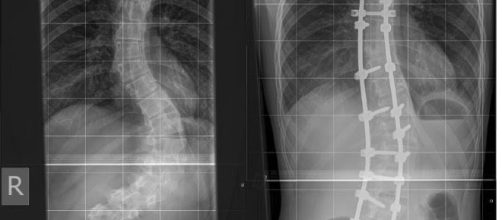Recent studies have shed a little light on Adolescent Idiopathic Scoliosis, and parents are urged to keep an eye out for symptoms that can indicate the beginning of this life-long condition.
While 90% of Scoliatic curves are mild and don't require active treatment, some cases are severe and require treatments such as bracing or even surgery. It is important to continually monitor curves in growing adolescents, as progression of the curves can change the treatment options.
Adolescent Idiopathic Scoliosis has onset related to age, and is, by far, the most common type of Scoliosis.
AIS most commonly affects children between the ages of 10 and 18, and is prevalent in 1 in 25 children. The cause of AIS is still unknown, but recent research has shown a possible genetic link. Approximately 30% of AIS patients have a family history of Scoliosis. Researchers are working hard to find the genes that cause AIS. Other theories as to the cause of Adolescent Idiopathic Scoliosis include: hormonal imbalance, muscle imbalance, and asymmetric growth.
Symptoms of AIS that parents need to be vigilant to watch for include: a rib hump, which is the prominence on the back and is the most visible sign of Scoliosis; shoulder height asymmetry, which causes one shoulder to be higher than the other; and a torso lean, which is the shift of the body to the right or the left, and is normally prevalent in patients with a single curve.
Successful bracing treatment requires early detection while the patient is still growing, mild to moderate curvature, regular examinations by an orthopedic surgeon, and a well-fitted brace that is replaced as the child continues to grow. Factors that can lead to consideration of surgical treatment include: the area of the spine involved, severity of the Scoliosis case, pain levels, and the amount of growth remaining.
Parents with children about to go through puberty need to be vigilant and watch for any development of the symptoms of Scoliosis. If any of the symptoms start to appear, parents should have their child examined by their pediatrician as soon as possible.

